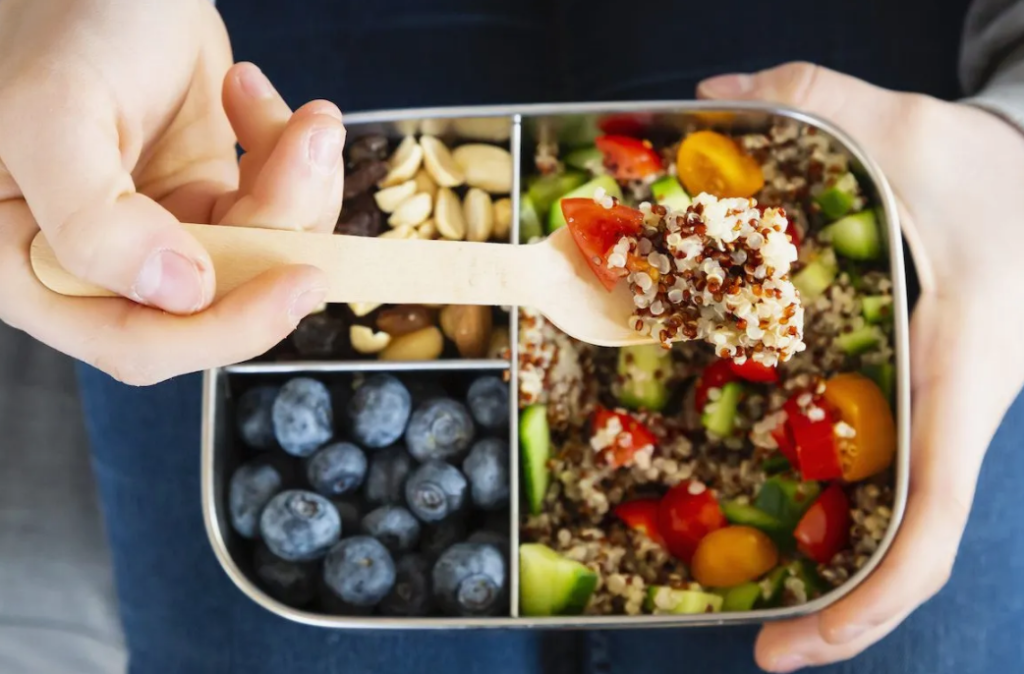Boxing for weight loss is an effective and engaging workout that combines cardio and strength training. It helps burn calories and build muscle for overall fitness. Boxing workouts can be tailored to different fitness levels and goals, making them suitable for beginners and experienced individuals alike. This high-intensity exercise not only aids in weight loss but also improves agility, coordination, and cardiovascular health. With proper technique and consistency, boxing can be a fun and challenging way to achieve your weight loss goals while boosting your overall well-being.
Boxing For Weight Loss

Benefits of Boxing For Weight Loss
Boxing for Weight Loss is a highly effective workout that offers numerous benefits for those looking to shed pounds. It combines intense cardio exercises with strength training, making it a complete workout for the entire body. In this blog post, we will explore the benefits of boxing for weight loss and how it can help you achieve your fitness goals.
Burns Calories- Boxing For Weight Loss
Boxing is a high-intensity workout that can help you burn a significant amount of calories. By engaging in punching, kicking, and other boxing moves, you activate multiple muscle groups, which leads to a higher calorie burn. A one-hour boxing session can burn up to 800-1000 calories, making it an efficient way to create a calorie deficit for weight loss.
Increases Metabolism- Boxing For Weight Loss
Boxing not only burns calories during the workout but also boosts your metabolism for hours afterward. High-intensity exercises like boxing can elevate your heart rate and increase your metabolic rate. This means that even after you finish your boxing session, your body continues to burn calories at an elevated rate. This is known as the afterburn effect, which can help you lose weight more effectively.
Builds Lean Muscle
Boxing involves a combination of strength training and cardio exercises, which help build lean muscle mass. The repetitive punching and kicking movements engage your upper body, lower body, and core muscles, resulting in improved muscle tone and definition. Building lean muscle not only enhances your physical appearance but also increases your overall strength and metabolism.
Improves Cardiovascular Health
Regular boxing workouts can significantly improve your cardiovascular health. The intense and continuous movements increase your heart rate, improving blood circulation and strengthening your heart muscles. Over time, boxing can help lower your resting heart rate, reduce the risk of heart disease, and improve overall cardiovascular endurance.
Boxing Techniques For Weight Loss
Boxing for Weight Loss and Boxing Techniques for Weight Loss are effective ways to improve fitness and shed pounds. Boxing workouts combine cardio, strength training, and agility exercises, making them an ideal choice for weight loss.
Warm-up Exercises
Before starting boxing exercises, it is crucial to perform warm-up exercises to prepare the body for the intense workout. Some effective warm-up exercises include:
- Jumping jacks
- Skipping rope
- Shadow boxing
- Bodyweight squats
Punching Combinations
Learning various punching combinations is essential for an effective boxing workout. Some common punching combinations include:
- Jab-cross
- Hook-uppercut
- Straight-cross-hook
- Body shot combinations
Footwork Drills
Footwork drills are crucial for boxing as they enhance agility and balance. Some effective footwork drills include:
- Boxing shuffle
- Ladder drills
- Circle drills
- Jump rope footwork exercises
Heavy Bag Workouts
Heavy bag workouts provide an excellent way to build strength and endurance. Some heavy bag workouts include:
- Power shots
- Interval training
- Speed and precision drills
- Combination workouts
Boxing Training Programs For Weight Loss
Boxing for Weight Loss and Boxing Training Programs for Weight Loss are effective ways to shed excess pounds and improve overall fitness. Boxing workouts not only help in burning calories but also enhance strength, agility, and endurance.
Beginner’s Program
For beginners, boxing training programs focus on fundamental techniques such as stance, footwork, and basic punches. These programs also incorporate cardio exercises to build stamina and endurance. Beginners need to start with light sessions and gradually increase the intensity as they progress.
Intermediate Program
The intermediate program includes advanced boxing techniques such as combinations, defensive maneuvers, and sparring. It also emphasizes high-intensity interval training (HIIT) to maximize calorie burn and improve cardiovascular fitness. Additionally, strength training exercises are integrated to enhance overall physical conditioning.
Advanced Program
Advanced boxing training programs are tailored for individuals with substantial experience in the sport. These programs focus on refining techniques, increasing speed and power, and mastering complex combinations. They also incorporate plyometric exercises and cross-training to elevate overall athletic performance.
Interval Training
Interval training is a key component of boxing workouts for weight loss. This type of training alternates between high-intensity bursts of activity and short periods of rest. It is highly effective in boosting metabolism, burning fat, and improving cardiovascular health. Incorporating interval training into boxing workouts can significantly enhance weight loss results.
Nutrition Tips For Boxing and Weight Loss
Boxing for Weight Loss and Nutrition Tips for Boxing and Weight Loss are crucial for those looking to achieve their fitness goals. In this article, we will explore the importance of nutrition in boxing and weight loss, focusing on a balanced diet, hydration, pre and post-workout meals, and supplements.
Balanced Diet
A balanced diet is essential for boxers aiming to lose weight. It should consist of a variety of nutrient-dense foods including lean proteins, whole grains, healthy fats, and plenty of fruits and vegetables. Additionally, monitoring portion sizes and avoiding processed foods and added sugars is crucial for maintaining a healthy weight.
Hydration Importance
Hydration plays a vital role in the performance and weight loss of boxers. It is important to consume an adequate amount of water throughout the day to maintain optimal hydration levels. Boxers should also be mindful of their fluid intake during training sessions to prevent dehydration and enhance overall performance.

Pre And Post-workout Meals
Pre and post-workout meals are key for boxers looking to lose weight. Consuming a balanced meal containing carbohydrates and protein before a workout can provide the necessary energy, while a post-workout meal should focus on replenishing lost nutrients and aiding muscle recovery. Incorporating whole foods such as lean meats, whole grains, and fruits into these meals is essential.
Supplements
While a balanced diet is crucial, some boxers may benefit from supplements to support their weight loss and performance goals. Protein supplements, BCAAs, and vitamin and mineral supplements can aid in meeting nutritional needs. However, it’s important to consult with a healthcare professional before incorporating any new supplements into your regimen.
Common Mistakes To Avoid In Boxing For Weight Loss
Boxing for Weight Loss is a great way to stay fit and active. However, there are common mistakes to avoid in this exercise regimen. Let’s explore some key pitfalls to steer clear of for optimal results.
Overtraining
Overtraining can lead to burnout and injuries. It’s essential to listen to your body and incorporate rest days. Balancing intensity and recovery is key to long-term success.
Poor Form And Technique
Poor form can diminish the effectiveness of your workout and increase the risk of strains. Focus on proper technique and seek guidance from a qualified instructor.
Ignoring Rest and Recovery
Rest and recovery are crucial for muscle repair and growth. Neglecting this aspect can lead to plateaus and overuse injuries. Prioritize adequate sleep and active recovery.
Neglecting Strength Training
Strength training complements boxing by improving overall muscle tone and metabolism. Incorporate bodyweight exercises and weights to enhance your boxing performance and weight loss goals.
Safety Precautions In Boxing For Weight Loss
Boxing is not only a great way to improve your physical fitness, but it can also help you lose weight. However, it is important to take safety precautions to prevent injuries while boxing for weight loss. In this blog post, we will discuss the safety measures you need to follow to ensure a safe and effective boxing workout.
Proper Warm-up And Cool-down
Before starting a boxing workout, it is essential to warm up your muscles and joints to prevent injuries. A proper warm-up should last for at least 10-15 minutes and may include:
- Jumping jacks
- High knees
- Shadowboxing
- Stretching exercises
After the workout, cool down for 5-10 minutes with stretching exercises to prevent muscle soreness and stiffness. A proper cool-down can include:
- Slow jogging
- Walking lunges
- Stretching exercises
Wearing Protective Gear
When boxing for weight loss, wearing the right protective gear can help prevent injuries. Essential protective gear for boxing includes:
| Gear | Description |
|---|---|
| Boxing gloves | Protects your hands and knuckles from injuries. |
| Hand wraps | Supports your wrists and prevents hand injuries. |
| Headgear | Protects your head and face from injuries. |
| Mouthguard | Protects your teeth and mouth from injuries. |
Listening To Your Body
It is essential to listen to your body when boxing for weight loss. Overtraining and pushing yourself beyond your limits can lead to injuries and burnout. Listen to your body and take rest when needed. Signs that you need to take a break include:
- Fatigue
- Muscle soreness
- Joint pain
- Difficulty in breathing
By listening to your body, you can prevent injuries and achieve your weight loss goals effectively.
Working With A Trainer
Working with a certified boxing trainer can help you learn proper boxing techniques and prevent injuries. A boxing trainer can:
- Teach you proper boxing stances and techniques.
- Provide you with a personalized boxing workout plan.
- Correct your form and prevent injuries.
- Motivate you to achieve your weight loss goals.
Working with a trainer can make your boxing for weight loss journey safe and effective.
Tracking Progress and Setting Goals
Boxing for Weight Loss is an effective way to shed those extra pounds while also improving your overall fitness and stamina. Tracking your progress and setting achievable goals can help you stay motivated and on track to reach your weight loss targets. In this blog post, we will discuss the importance of keeping a workout journal, measuring weight loss, setting realistic goals, and tracking performance metrics.
Keeping A Workout Journal
One of the most effective ways to track your progress and stay motivated is by keeping a workout journal. This journal should include details about your boxing workouts, such as the date, time, duration, and type of workout. You can also include information about your diet, including what you eat, how much you eat, and when you eat. By keeping track of your progress, you can identify areas where you need to improve and make the necessary adjustments to reach your weight loss goals. Additionally, a workout journal can serve as a source of motivation when you look back and see how far you’ve come.
Measuring Weight Loss
Measuring your weight loss progress is an essential part of achieving your weight loss goals. However, it’s important to remember that weight loss is not the only measure of progress. You should also track your body measurements, such as your waist, hips, and thighs. By tracking these measurements, you can see changes in your body composition even if your weight stays the same. It’s also essential to track your body fat percentage, as this is a better indicator of overall health and fitness than weight alone.
Setting Realistic Goals
Setting realistic weight loss goals is crucial to your success. While it’s tempting to set lofty goals, such as losing 10 pounds in a week, this is not a realistic or healthy approach. Instead, aim to lose 1-2 pounds per week, which is a safe and achievable target. Remember that weight loss is a journey, and it takes time and effort to achieve your goals. Set small goals along the way, such as increasing the number of rounds you can box or improving your technique. Celebrate your victories along the way to stay motivated and focused on your goals.
Tracking Performance Metrics
Tracking your performance metrics is another essential part of achieving your weight loss goals. These metrics can include the number of rounds you can box, the number of punches you throw, and your heart rate during a workout. By tracking these metrics, you can see improvements in your fitness level, which can be a great source of motivation. You can also use these metrics to set new goals and challenge yourself to improve your performance in each workout.
Motivation and Mental Benefits of Boxing For Weight Loss
Boxing for Weight Loss is a popular fitness activity that offers various physical and mental benefits. This blog post will delve into the Motivation and Mental Benefits of Boxing for Weight Loss, highlighting how it can positively impact your overall well-being.
Stress Relief
Engaging in boxing helps release endorphins, reducing stress levels and promoting a sense of calm. The physical exertion involved in boxing acts as a form of therapy, allowing individuals to channel their emotions and frustrations effectively.
Improved Confidence
Boxing empowers individuals by enhancing their physical strength and skills, leading to increased self-assurance. The challenging nature of boxing encourages individuals to push their limits, fostering a positive self-image and belief in their abilities.
Enhanced Focus and Discipline
Regular boxing training improves concentration and mental discipline as practitioners need to focus on their technique and opponent’s movements. The structured nature of boxing workouts instills a sense of discipline and dedication, translating into improved focus in other areas of life.

Sense of Achievement
Achieving personal milestones in boxing, such as mastering a new technique or winning a sparring match, boosts self-esteem and provides a sense of accomplishment. The tangible progress made through consistent training instills a feeling of fulfillment and motivates individuals to set and achieve new goals.
Conclusion
To sum up, boxing is an effective and enjoyable way to shed those extra pounds. With its high-intensity and full-body workout, it can help you burn calories, build strength, and improve cardiovascular endurance. Moreover, the combination of physical and mental discipline in boxing can boost confidence and relieve stress. So, if you’re looking for a dynamic and engaging exercise routine to achieve your weight loss goals, boxing might just be the perfect fit for you. Give it a try and see the results for yourself.



